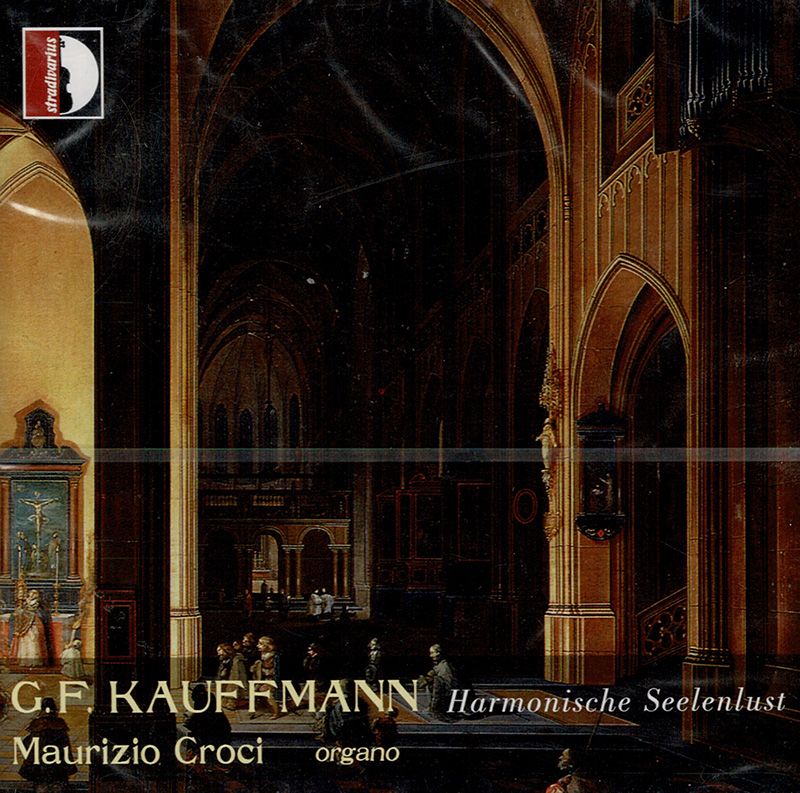Logowanie
Mikołaj - ten to ma gest!
Elton John, The Mamas & The Papas, Cat Stevens, Rod Stewart, Bobbie Gentry, Stevie Wonder, Engelbert Humperdinck
Memory Lane
Edycja Numerowana - 1000 egzemplarzy w skali światowej
RACHMANINOV, Eiji Oue, Minnesota Orchestra
Symphonic Dances / Vocalise
Best Recordings of 2001!!! NAJCZĘŚCIEJ KUPOWANA PŁYTA Z RR!
Karnawał czas zacząć!
Music of Love - Hi-Fi Latin Rhythms
Samba : Music of Celebration
AUDIOPHILE 24BIT RECORDING AND MASTERING
CHOPIN, LISZT, DEBUSSY, DVORAK, Gerhard Oppitz
Dances romantiques - A fantastic Notturno
Wzorcowa jakość audiofilska z Clearaudio
Winylowy niezbędnik
ClearAudio
Double Matrix Professional - Sonic
najbardziej inteligentna i skuteczna pralka do płyt winylowych wszelkiego typu - całkowicie automatyczna
KAUFFMANN, Maurizio Croci
Harmonische Seelenlust
- 1. Fantasia in G Maurizio Croci - 2:46
- 2. Gelobet seist du, Jesu Christ: con Oboe - Maurizio Croci, Kerstin Kramp - 1:40
- 3. Nun freut euch, lieben Christen g'mein - 1:40
- 4. Nun freut euch, lieben Christen g'mein: Alio modo (Alio modo) Maurizio Croci - 1:37
- 5. Vom Himmel hoch, da komm ich her - 1:46
- 6. Lobt Gott, ihr Christen allzugleich - 2:03
- 7. Lobt Gott, ihr Christen allzugleich: Alio modo - 0:43
- 8. Du, o schönes Weltgebäude: con Oboe (con Oboe) - Maurizio Croci, Kerstin Kramp - 1:35
- 9. Vater unser im Himmelreich: Fuga - 2:22
- 10. Vater unser im Himmelreich: Alio modo - 1:55
- 11. Vater unser im Himmelreich: Alio modo - 1:58
- 12. Schönster Immanuel - 2:28
- 13. Valet will ich dir geben - 1:17
- 14. Warum betrübst du dich, mein Herz - 1:53
- 15. O Heiliger Geist O Heiliger Gott!: O Jesulein süss, o Jesulein mild! - 1:40
- 16. Ein Feste Burg - 2:10
- 17. Ein Feste Burg: Alio modo. Choral in Pedal - 2:05
- 18. Alle Menschen müssen sterben - 1:14
- 19. Fugella super 'Wir glauben all' - 0:32
- 20. Nun ruhen alle Wälder :In allem meinen Thaten - 1:30
- 21. O Herre Gott, dein göttlich Wort - 2:52
- 22. O Herre Gott, dein göttlich Wort: Alio modo. A 2 Clav. - 1:31
- 23. Herr, ich habe miss gehandelt - 3:27
- 24. Jesus Christus, unser Heiland, der den Tod überwand - 2:33
- 25. Jesus Christus, unser Heiland, der von uns den Gottes Zorn wand - 3:31
- 26. Nun komm, der Heiden Heiland - 0:44
- 27. Nun komm, der Heiden Heiland - 1:03
- 28. Nun komm, der Heiden Heiland: Alio modo (Alio modo) - 1:16
- 29. Nun komm, der Heiden Heiland: Totum in parte - 0:26
- 30. Nun komm, der Heiden Heiland: Alio modo - 0:48
- 31. Nun lob, mein Seel, den Herren - 1:32
- 32. Man lobt dich in der Stille: Nun lob, mein Seel, den Herren - 3:09
- 33. Herr Gott, dich loben alle wir: con Oboe - Maurizio Croci, Kerstin Kramp - 2:39
- 34. Wenn wir in höchsten Nöten sein - 2:53
- Łączny czas: 1:03:16
- Maurizio Croci - organ
- KAUFFMANN
The coexistence of pieces, whose writing go back to the austerity of the late renaissance counterpoint (old style), and of the others, with a light and mostly melodic plot, scatter with gallant gestures (‘neue Gusto’), is a characteristic of the serial publication that, from 1733 on, would have constituted the Harmonische Seelenlust, i.e. the first collection of chorale preludes for organ to appear in print since Scheidt’s Tabulatura Nova of 1624. Amongst the 98 chorales preludes of the Harmonische Seelenlust virtually every type urrent at the time is represented, including duets, fughettas and a variety of cantus firmus settings. In some of them the chorale melody has to be “played à part on the oboe”: the mix of the two sounds turns out to be especially happy if the “oboe is placed in order to give the impression that it is an organ’s stop”.





























